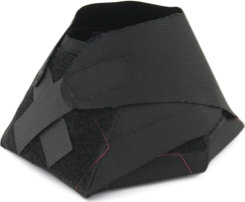Melissa wrote to say and ask" "I have been ground training a two year old Morgan-TB cross and doing very well considering it is my first horse I have received that was not already mature and able to ride. When I get to the point, which will be very soon :), to put a saddle on him should I do so at the same time I am introducing him to a snaffle bit? Or should a get him ok with saddle before I introduce a snaffle bit, or introduce to a snaffle bit before I try and put a saddle on him. Thanks in advance. Monica."
There are many ways of getting that horse ride able, Melissa. If I'm understanding you right, you are thinking that a saddle and a bit at the same time is alot for a young horse to accept, and you would be right, but I think it is all about how you go about asking him. I don't have a checklist or a written in stone sequence of events for starting a horse. I would suggest getting a colt starting DVD's from any number of the top clinicians to help guide you. But in the absence of that, what I might do or might have done all along is to prepare that horse to accept and give to pressure, such as bending him or having him give to lateral flexion, and to accept handling around and in his mouth.
Under a rope halter I would work with the horse on lateral and vertical flexion. You want to be able to tip his head for direction and tip his head in order to disengage the back end to get him to stop.
I would also put my fingers in the corners of his mouth so he can feel that in his mouth and on the tops of his bars. See picture at left. The first time it may only be a second or two, then you would progress to longer periods of time. The mistake in this is the timing as with all pressure and release. You want to remove your finger before the horse starts to move, throw or shake his head, as this is teaching him that he can move to avoid that. So again, start with very short increments of time and progress from there.
When I am leading a horse under hand, I might stop and occasionally hold a section of the lead rope underneath his jaw and slide a section of that lead rope into the horse's mouth so the first time he is experiencing something across his tongue it is soft. See picture at right.
In the past I have put a bridle on a young horse with a rubber training snaffle (traditional D ring or Egg Butt snaffle with rubber connecting bars) so he could carry it around for increasing periods of time and getting used to that feel. But now days, I don't do that. No particular reason except I want to be around the young horse while he has that get up in his mouth. I am content now with introducing the saddle to the horse and riding him in a round pen with a rope halter. Riding with a rope halter and using just the regular lead rope only allows the rider to bend the horse (lateral flexion) in one direction at a time.
I would even ground drive him with two lunge lines, each ran through the stirrups and connected to the cheek piece of the halter, before I made my first ride on him. Just be careful not to use both drive lines at the same time. You want your signals to be clear to him. I have a previous post and video on ground driving here: Ground Driving Your Horse.
But it all kind of depends on the horse. I may not always ground drive a horse first before I ride him, but would always ride him first in a rope halter. See photo at left. Again, using the lead rope on a rope halter (in effect riding with one rope/rein) doesn't allow the rider to be pulling on the horse's head and confusing him. Using wide, clear signals to tip the head with the lead rope are a good way to introduce pressure from a siting rider.
So I guess if you put this into a line and block chart, the saddle breaking comes first, then getting the horse comfortable with the bit, but not before the horse understands giving to pressure hence the lateral and vertical flexion work every time your handle the horse and prior to introducing the saddle.
I would make sure the horse received a dental exam and have his wolf teeth removed. Even if you can't see wolf teeth they make be just under the gum waiting to erupt, and sometimes they won't be apparent (or erupt) until the horse is three years old. A bit clanging into them is not going to work to his or your best interests to say the least. So having a Vet dental exam and even rounding some of the teeth (making a bit seat) is a pretty smart thing to do prior to putting a bit in his mouth. Good luck and let me know how it goes for you and your Morgan/TB cross. Safe Journey.




















No comments:
Post a Comment